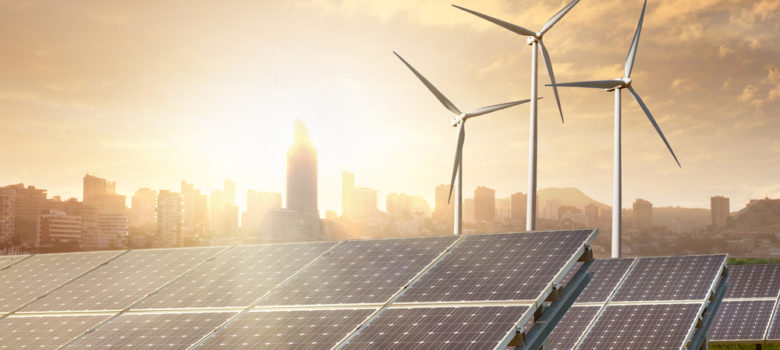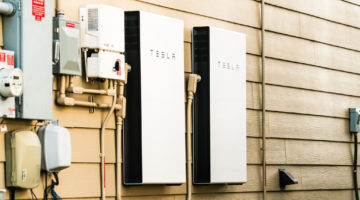
The Feed-in Tariff
The Feed-in Tariff was a government subsidy scheme designed to reward homeowners and businesses for microgeneration of renewable energy. It worked by measuring the generation and export levels of various technologies – primarily photovoltaic solar panels (solar PV) – and paying out for both.
The technologies covered were:
To be eligible for the payments, domestic applications had to be under 5MW and fall on the list of approved installations. For the higher band of payments, the property could also not have an EPC lower than a D.
The End of the Feed-in Tariff
In April 2019 the Feed-in Tariff closed for all new applications, with nothing expressly planned to replace it. Existing beneficiaries of the Feed-in Tariff continue to benefit from payments until the end of their 20/25 year contract, but no new installations are able to apply.
The Smart Export Guarantee (SEG)
The Smart Expert Guarantee is a government scheme that was announced in January 2019 and designed to replace the Feed-in Tariff, though it’s not up and running yet. It shares a lot of similarities with the Feed-in Tariff but has a few key differences.
The Smart Export Guarantee will not pay for generation
When the Feed-in Tariff was still in operation, people were paid not only for exported energy, but for the energy they generated. There is no plan for this generation tariff to be replaced; the Smart Export Guarantee will be export only.
Large energy suppliers will have to pay for your exported energy
Under the Smart Export Guarantee, any energy company with 250,000 electricity supply customers or more will be obligated to offer at least one rate for exported electricity. Smaller energy companies can opt-in to do the same, but only the bigger companies will have to.
It’s hoped that this initiative to give inherent value to exported energy will help further the aim of a subsidy-free energy market for smallscale renewable energy generation.
The energy suppliers will set the price
When the Feed-in Tariff was in place, the rate of the export tariff was set by the government. Although this varied over time (showing a significant downward trend from when the scheme first began), it was a way for OFGEM to regulate the export value and ensure that investing in FIT technologies remained financially viable. For a while now the export price is around 5.4p/kWh.
With the Smart Export Guarantee, the only guideline for energy companies is that they must offer something. It can’t be zero or a negative figure, but it doesn’t have to be much.
You’ll need a smart meter
Smart meters are fundamental to this whole thing for 2 reasons.
Under the Feed-in Tariff, the export for most homes was not directly measured but was fixed at 50% of total electricity generated. Instead, all export will have to be metered, using a meter capable of reading half-hourly export volumes. This will mean that people are rewarded a lot more fairly on the energy they use vs what they export.
The second reason is that these half-hourly readings will, the government hopes, drive the energy companies to begin paying different rates for different times of export. This will help to even the energy generation load from intermittent sources – something that the National Grid desperately needs to do.
Even though the Smart Export Guarantee isn’t running yet, installations made now will be eligible
Many people are worried that the solar industry is in freefall following the end of the Feed-in Tariff and the lack of an immediate replacement. However, more may be willing to continue investing in solar PV if they knew that they could apply for the Smart Export Guarantee when the policy kicks in, even if their solar array is installed now and the SEG doesn’t come in for another couple of years.
That said, we would advise waiting. The cost of solar power has dropped drastically over the past 10 years, and may well continue to do so (though probably less rapidly, now that market demand is slowing down). Therefore installing a system when SEG comes in may be a cheaper initial outlay, and give more immediate savings.
Issues with the Smart Export Guarantee (SEG)
Smart metres
While the residential smart meter rollout continues, there are still a massive number of homes in the UK that don’t yet have one installed. With the Smart Export Guarantee, you’ll be hard pushed to get paid for your exported electricity without one, so if you’re thinking of getting investing in an eligible technology any time in the long-to-medium term future, it may well be worth getting one.
The alternative to a SMETS device is a standalone export meter, but according to BEIS these would cost the consumer around £300 – a significant expenditure for a technology that will struggle to be financially viable for many to begin with.
Battery Storage
On a time of use tariff, electricity is cheaper at certain times of the day. With the government hoping to encourage more and more of these kinds of tariffs, battery storage and export rates are going to present an interesting problem.
There is, theoretically, nothing to stop someone from filling their battery from the grid during the off-peak, cheap electricity hours, and then exporting it during peak hours. SEG would automatically detect the export on your export meter and pay you accordingly. However, there is nothing to say that the electricity came from your microgeneration renewable sources, and you’re therefore being rewarded for exporting non-renewable energy and exploiting a loophole in the system.
It’s one of the problems that OFGEM and the government are discussing with experts in the industry to come up with a solution.
Is the Smart Export Guarantee a good replacement to the Feed-In Tariff?
It’s hard to tell at this point, as the policy is in its infancy. There will no doubt be a lot of bureaucracy and changes to the original outlay, and there’s a lot we don’t know about the practicalities of implementing the new export tariff system.
The fact that there is no minimum to the export rate that energy companies must pay means that the government is envisaging a competitive market, but it will be difficult to make this happen artificially. That means that people will likely experience very low export tariffs, much lower than with the Feed-in Tariff.
That said, it’s worth saying that this is a huge step up from the previous government stance, which was that no further subsidies of this nature would be considered until 2025. The SEG represents hope that the solar industry will not collapse entirely now that the Feed-in Tariff has stopped taking new applications.
Think we missed something? Do you have a different opinion?
Comment below to get your voice heard…












Our solar PV FIT tariff has a term of 25 years (installed pre August 2012)
Hi JT,
Thanks for pointing out the older contract time! We’ve amended it in the article.
Thanks,
Harri
How about areas that struggle with smart meters? I’m in a well populated area but can’t have a smart meter because the mobile signal is appalling. I have to have a box connected to the WiFi to make mobile calls!!
if someone is locked on the high rate like I am for 25 years from when I had the pv installed prior to 3/3/12 will this ne scheme affect my contract
Nope, your contract will continue on as normal 🙂
It seems like a retrograde step to not guarantee a fixed feed in tariff. Solar power is a strong antidote to climate change and pollution. It also requires a substantial initial investment. Due to it’s nature it only generates power during daylight hours. By feeding into the grid when a house is not using electricity the grid can generate less power then and a house can take back that power from the grid when it needs it. The alternative is for each house to also have a large battery to store its excess power which would be very expensive in terms of cost, the earth’s resources and pollution. By letting electricity companies (ECs) determine the price individuals will be competing against the cost that large scale generating companies can sell it for which is much less that the ECs charge for it. There is no incentive for the ECs to encourage solar power by offering a reasonable rate to buy it as their motive is profit not the environment. Ultimately anyone investing in solar power will be selling electricity to ECs at a low rate and buying it back from them when they need it at a high rate so why bother. ECs should at least be required to pay a price which is equivalent to the price they charge.
Hi I’ve had a 4kw battery system installed and was promised the battery would supply my needs when the sun goes down and at first it did then when the smart meter was fitted it all changed now I have no control over the battery it is controlled to supply the grid and I have to pay 13p to get the energy back from the supplier and they give me 5p per kWh back that’s steeling so think carefully before shelling out your hard earned cash .
There’s no doubt that long term the SEG will be a lot more effective and have a lot more longevity than the FIT, but the first tariffs will surely be complete guesses, and the whole thing will be a mess
sound like SEG have developed a lot! exciting stuff!
With the new un announced SEG…. Is it still the case that a property needs an EPC rating or level D or above?
Please can you help me I need to replace my feed in meter
Can we move our feed in tariff contract to a new home if we install new solar Panels?
I have 16 solar panels on a south facing area and my electricity bill is ridiculous!
I also got the panels from ashadegreener and I have just asked them for a battery for them!
I have been informed that there panels are not compatible with any batteries and their experts are currently working on it!
So I have told them that I need to have them removed from my roof as it needs attention to the tiles!
They have sent me a form to fill in and they are asking for a refundable payment of £1000!.
It is quite obvious that I am not the only person to be duped by this particular company!
I think that there are enough of us to be able to resolve this problem!
So I would appreciate it if anyone would like to join me on a mission to raise this issue with the Boris Johnson and the other MPs that are obviously aware of the government’s policies that will go back to the introduction of the feed in tariff and Companies House will have the records relating to any issues that will be associated with Ashadegreener!
Wouldn’t it be better and more efficient for solar power generation to be used local to where it is generated, wherever possible?
We have a hot water cylinder with a spare lug for a bottom-located immersion heater which could be connected to the output of our solar panels inverter. Do people know if doing this is electrically viable using our existing wall-mounted 3 Kw mains inverter and if so, how should the conversion be accomplished?
At the rates of reimbursement currently on offer by the Utility Providers, it does seem there’s an opportunity here to make things more financially viable to owners of small solar power installations.
One other advantage would be that less electricity would have to be conveyed across what is becoming a very overburdened National Grid, especially with more and more electric car chargers coming on-stream today.